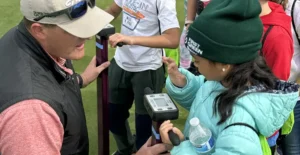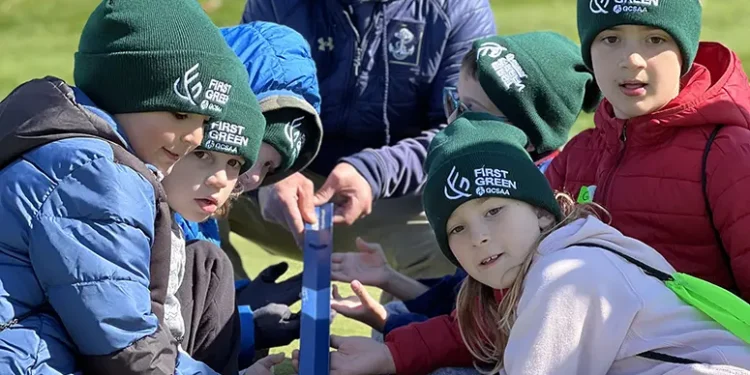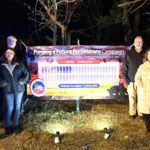by Staff writer
On Thursday, May 8th, the scenic grounds of Westminster National Golf Course, in partnership with the Mid-Atlantic Chapter of Golf Course Superintendents, came alive with the excited chatter and wide-eyed wonder of 100 third graders from Westminster Elementary. From 10:00 AM to 2:00 PM, students rotated through six dynamic learning stations, each offering real-world connections to the subjects they’re studying in school.
Thanks to the golf course’s commitment to community outreach and environmental education, students were able to experience a cross-curricular First Green field trip.

First Green is an innovative environmental education outreach program that uses golf courses as living laboratories to teach STEAM (Science, Technology, Engineering, Art, and Math) concepts. Throughout the day, students engaged in lessons on soils, grass, water conservation, math, wildlife habitat, and the physics of golf—experiencing firsthand how golf course superintendents use STEM knowledge every day to manage and protect these valuable green spaces.
At Station 1, instructors Ryan Higgins and John Kaminski introduced students to soil science, highlighting how golf courses like Westminster National serve as vital green spaces. From filtering water to supporting wildlife habitats, the course isn’t just about golf—it’s an ecosystem all its own.
Station 2 featured Andrew Harrison and Tim Riismandel, who made the physics of golf accessible and fun. Students learned why a driver sends the ball farther than a five iron, then measured their shots and converted the distances into yards—combining physical activity with real math practice.
Over at Station 3, Doug Bottamiller and Jason Kopp led a discussion on water conservation. Students discovered how turfgrass is mostly water and how careful irrigation keeps the greens healthy without wasting resources—a real-world application of environmental responsibility.
Math took the stage at Station 4, where Erik Dittmar and Doug AIT showed students how golf course superintendents use area calculations and averages to manage everything from fertilizer amounts to green speed. Students even calculated the square footage of a tee box, connecting geometry to the world under their feet.
After a sunny lunch break, creativity flourished at Station 5, where Tyler Herbst and Bob Albert introduced students to golf course architecture. Tasked with designing their own golf hole, students learned how course design can balance playability with features that support wildlife and ecological health.
Finally, at Station 6, Paul Kraushofer and Craig Kirby brought the focus to putting—teaching students to read the contours of a green and perfect their short game. A friendly putting competition brought laughter and cheers to close out the learning stations.
The day concluded with a group photo and demonstrations of cup cutting and hand watering, offering students a behind-the-scenes look at what it takes to keep a golf course running smoothly.
First Green connects classroom learning to the natural world in a memorable and meaningful way. “The Mid-Atlantic Association of Golf Course Superintendents had done a fantastic job of growing the program in Carroll County and is trying to get more schools involved all across the state,” shares Ryan Kraushofer, Superintendent and General Manger at Westminster National Golf Course. Best of all, it remains a free program for schools—making environmental STEAM education more accessible than ever.









